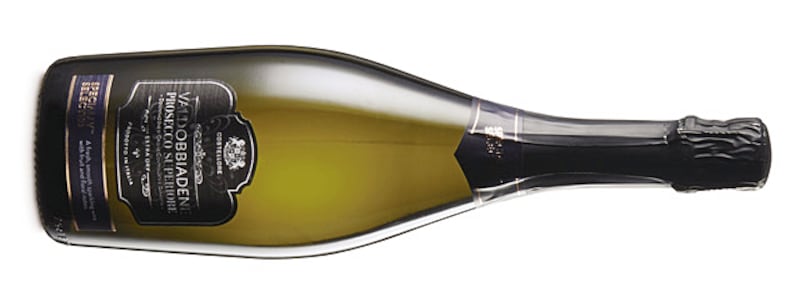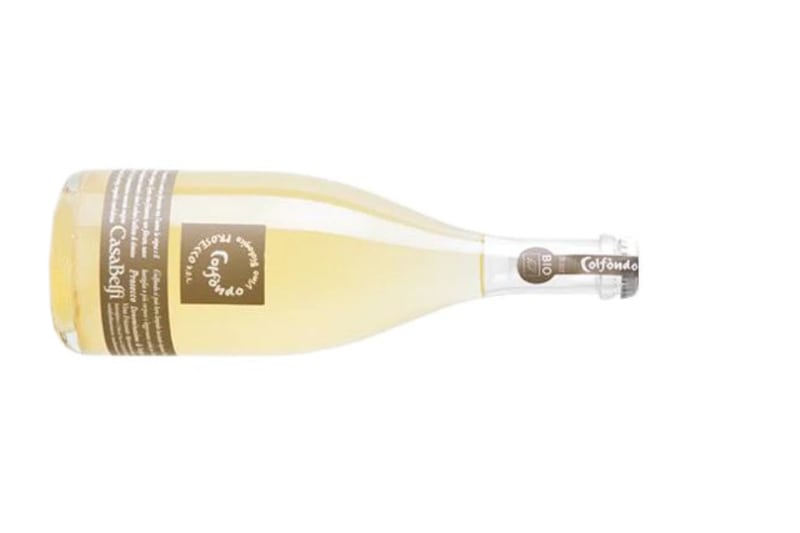On a visit to the Treviso region of Italy some years ago, being early for an appointment, we dropped into a local bar in a rural village. Two burly farmers walked in ahead of us. We watched with interest as the barman served them a jug of cloudy, lightly sparkling wine. He then went out the back, where we could see him cooking a red pepper frittata, which he plonked in front of the farmers. We asked for the same. This was the first time I had tried the local tipple – Prosecco.
Since those days, Prosecco has become one of our favourite drinks and we are not alone. Over the past 20 years, sales have grown enormously around the world to make it the most popular glass of fizz, with sales outstripping Champagne, Cava and all other sparkling wine. Production has grown from one million bottles in 2006 to 680 million in 2023. Kylie makes one, Graham Norton has one, so too do Vera Wang, and Poppy and Cara Delevingne.
The first written mention of Prosecco is in the 18th century but it is believed to be much older than that. The name probably comes from the village of Prosecco near Trieste, which is 150km from the main area of production. The original was an artisanal drink often sold with a driven cork secured by a piece of string. It was the classic aperitif in nearby Venice, sometimes as an ingredient in a cocktail but more often on its own.
It was made by the ancestral method, whereby fermentation stopped in cold weather and the wine was bottled. As temperatures rose in spring, the fermentation started again, creating a lightly sparkling wine. The string was to stop the cork being pushed out by the pressure of the bubbles. Prosecco can be a still wine, but this is rarely found in Ireland.
RM Block
Nowadays most Prosecco is made in large stainless-steel tanks using the Charmat method, producing a wine that is light, refreshing and fruity. The grape variety is glera and the region of production is the Veneto in northwest Italy. Since 2020, rosé Prosecco has been permitted, with the addition of 10-15 per cent pinot nero (pinot noir).
Why do we love Prosecco so much? Partly because it is far less expensive than Champagne and an affordable choice for any mini-celebration.
More fruity and usually sweeter than Champagne, it is also much easier to drink, especially without food. Prosecco is used in a wide variety of cocktails, most famously the Bellini and the Aperol Spritz, but you can create your own cocktail by simply adding your favourite fruit juice and decorating it with the same fruit. So there it is – a simple, affordable, fun glass of fizz that adds a touch of glamour to any occasion.
Decoding the label
A guide to understanding the various styles of Prosecco:
Prosecco Frizzante is lightly sparkling and will have a crown cap or driven cork. It is treated by Revenue as a still wine, so it will generally be less expensive than spumante.
Prosecco Spumante has more bubbles than a frizzante and will usually have a mushroom, Champagne-style cork.
Col Fondo is a Prosecco made in the traditional bottle-fermented style. It is usually cloudy and has more texture and flavour.
Conegliano Valdobbiadene is the region said to produce the best Prosecco.
Prosecco Superiore is made from grapes grown on the steeper hillside.
How much residual sugar does it contain?
Prosecco comes in varying degrees of sweetness and some of the names can be a little confusing. Brut Nature is the driest Prosecco, with less than 3g residual sugar per litre. Extra Brut has 3g to 6g of residual sugar, while Brut (the most common style) has less than 12g. Extra Dry is actually sweeter than Brut, with between 12g and 17g, and Dry is sweeter again, with up to 32g of sugar. Demi-Sec is the sweetest Prosecco of all, with between 32g and 50g of residual sugar per litre.

Aldi Specially Selected Valdobbiadene Prosecco Superiore Extra Dry
11.5%, €12.99
Fresh and frothy, with rounded, ripe peach fruits and an off-dry finish.
From Aldi.

Guerrieri-Rizzardi Prosecco Spumante Extra Dry NV
11%, €22.95
Pears and red apple fruits; rich, but nicely balanced by zesty lemons.
From O’Briens.

Casa Belfi Prosecco Colfondo Frizzante
11%, €23.95-€25
Biodynamic, bone-dry and lightly cloudy, this is a delicious, scented, floral Prosecco with clean orchard fruits.
From Le Caveau, Kilkenny; Baggot Street Wines; Green Man Wines, D6W; Lillith, D7; L’Atitude 5, Cork.
Bortolomiol Prosecco Superiore Prior Brut, Valdobbiadene
11%, €28.95
A stylish Prosecco with crisp apple and peach fruits, and a lingering mineral finish.
From Mitchell & Son, Sandycove, IFSC and Avoca outlets.














